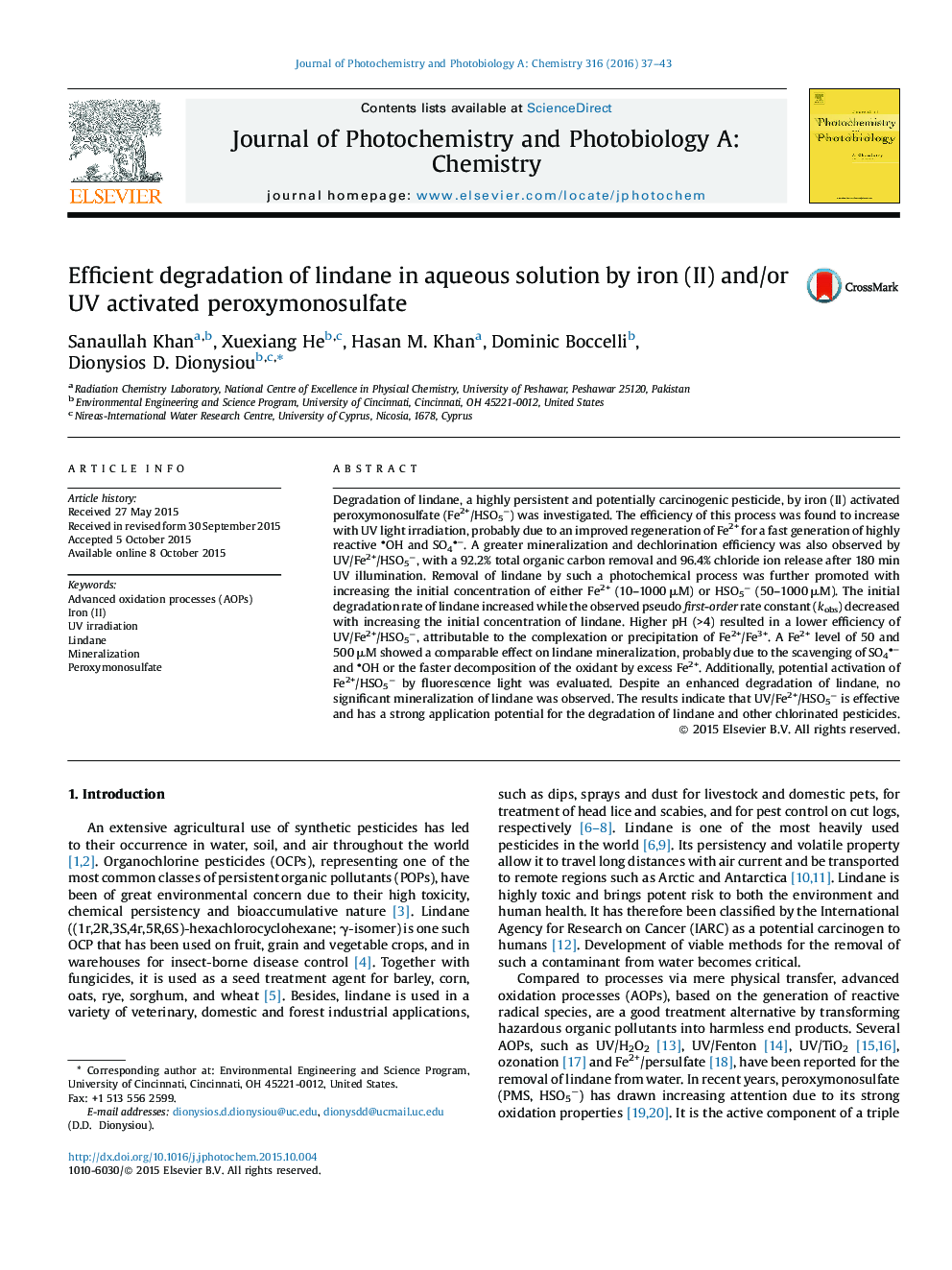| Article ID | Journal | Published Year | Pages | File Type |
|---|---|---|---|---|
| 26287 | Journal of Photochemistry and Photobiology A: Chemistry | 2016 | 7 Pages |
•Removal of lindane was studied by Fe2+/HSO5− based advanced oxidation processes.•Fluorescence light/Fe2+/HSO5− yielded limited degradation and mineralization.•UV/Fe2+/HSO5− was successful in degradation, dechlorination and mineralization.•Performance of UV/Fe2+/HSO5− was better at high [HSO5−]0 and [Fe2+]0 and at low pH.•Increasing [Fe2+]0 beyond optimum dose had a negative effect on UV/Fe2+/HSO5−.
Degradation of lindane, a highly persistent and potentially carcinogenic pesticide, by iron (II) activated peroxymonosulfate (Fe2+/HSO5−) was investigated. The efficiency of this process was found to increase with UV light irradiation, probably due to an improved regeneration of Fe2+ for a fast generation of highly reactive OH and SO4−. A greater mineralization and dechlorination efficiency was also observed by UV/Fe2+/HSO5−, with a 92.2% total organic carbon removal and 96.4% chloride ion release after 180 min UV illumination. Removal of lindane by such a photochemical process was further promoted with increasing the initial concentration of either Fe2+ (10–1000 μM) or HSO5− (50–1000 μM). The initial degradation rate of lindane increased while the observed pseudo first-order rate constant (kobs) decreased with increasing the initial concentration of lindane. Higher pH (>4) resulted in a lower efficiency of UV/Fe2+/HSO5−, attributable to the complexation or precipitation of Fe2+/Fe3+. A Fe2+ level of 50 and 500 μM showed a comparable effect on lindane mineralization, probably due to the scavenging of SO4− and OH or the faster decomposition of the oxidant by excess Fe2+. Additionally, potential activation of Fe2+/HSO5− by fluorescence light was evaluated. Despite an enhanced degradation of lindane, no significant mineralization of lindane was observed. The results indicate that UV/Fe2+/HSO5− is effective and has a strong application potential for the degradation of lindane and other chlorinated pesticides.
Graphical abstractFigure optionsDownload full-size imageDownload as PowerPoint slide
